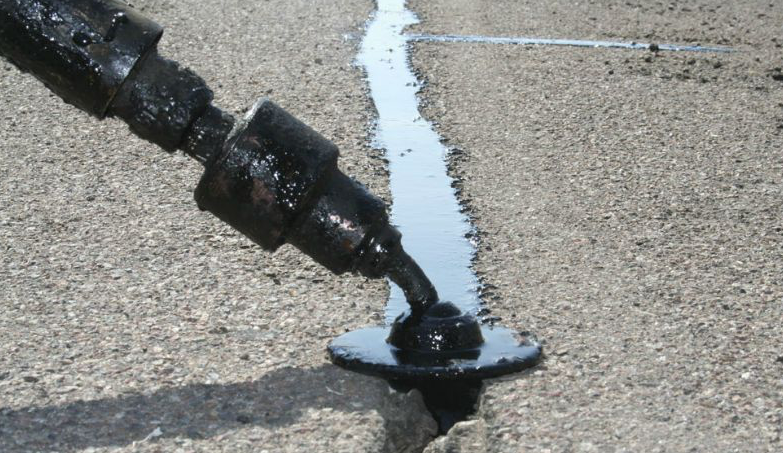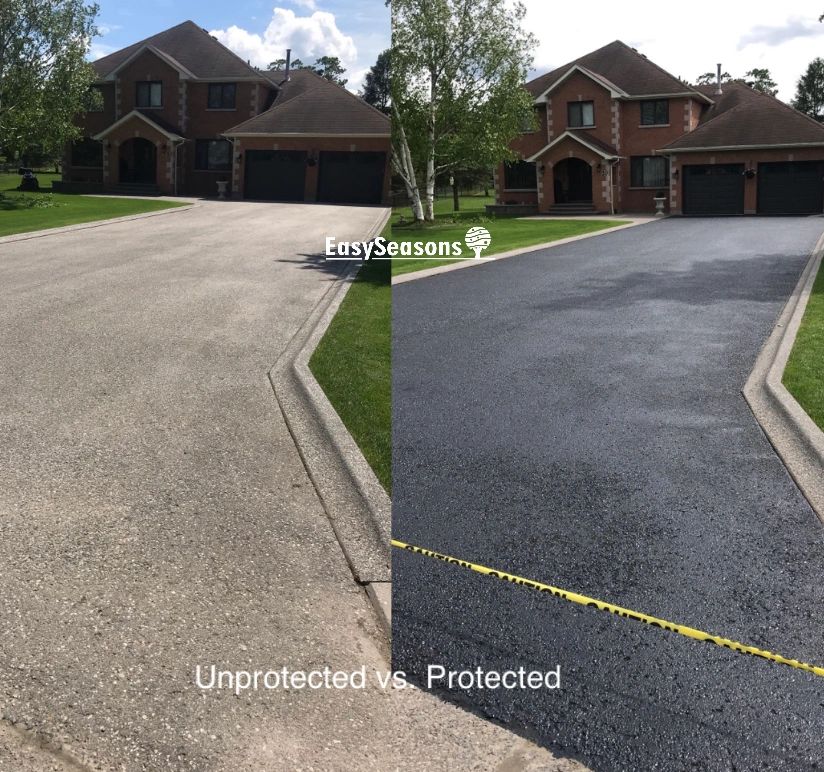Change Your Building's Aesthetic appeals: Commercial Parking Area Leading and Asphalt Sealing Solutions
Change Your Building's Aesthetic appeals: Commercial Parking Area Leading and Asphalt Sealing Solutions
Blog Article
Hot Mix Asphalt: A Lasting Solution for Sidewalk
Hot Mix Asphalt (HMA) has actually emerged as a leading sustainable selection for pavement options, offering a myriad of ecological benefits and cutting-edge innovations. As the need for environment-friendly building methods expands, checking out the subtleties of HMA's sustainability can supply beneficial insights into the future of sidewalk solutions.
Environmental Advantages of Hot Mix Asphalt

Additionally, Warm Mix Asphalt aids to alleviate urban heat island results. Its dark shade takes in sunlight, reducing the amount of heat reflected back into the ambience contrasted to lighter-colored pavements. This can decrease ambient temperature levels in city areas, reducing the demand for air conditioning and eventually minimizing energy consumption.
On top of that, Warm Mix Asphalt adds to improved stormwater management. Its permeable nature permits water to penetrate the pavement and recharge groundwater supplies, reducing drainage and the danger of flooding. These ecological benefits make Warm Mix Asphalt a sustainable selection for paving freeways and roads.
Power Efficiency in HMA Manufacturing
Is energy efficiency an essential consider the manufacturing of Warm Mix Asphalt (HMA)? Absolutely. Energy plays a significant function in the manufacturing of HMA, impacting both expense and ecological sustainability. One crucial facet of power effectiveness in HMA manufacturing is making use of cozy mix asphalt (WMA) technologies (angled parking). WMA enables for the blending and placement of asphalt at reduced temperature levels contrasted to standard warm mix asphalt, resulting in decreased power consumption throughout production. This procedure not just lowers fuel usage but additionally decreases greenhouse gas exhausts, making it an extra environmentally friendly alternative.
Furthermore, improvements in plant modern technologies have actually led to more energy-efficient HMA manufacturing processes. By maximizing power usage in HMA production, the industry can minimize its carbon footprint while maintaining premium pavement materials.
Recyclability of Hot Mix Asphalt
The recyclability of Hot Mix Asphalt (HMA) is a pivotal facet of its sustainability and long-term environmental influence. HMA is just one of the most recycled products in the USA, with over 100 million lots of redeemed asphalt sidewalk (RAP) being recycled yearly in new sidewalk building. Reusing HMA supplies a number of ecological advantages, such as reducing the need for virgin products, decreasing energy consumption throughout manufacturing, and reducing the quantity of waste sent out to garbage dumps.
The procedure of recycling HMA includes crushing that site the existing sidewalk, squashing it into smaller sized items, and mixing it with new aggregate and asphalt binder to produce a recycled mix. This recycled mix can usually perform in addition to or also much better than conventional HMA, while needing fewer raw materials and creating lower greenhouse gas emissions. By including RAP into brand-new sidewalk tasks, road agencies can conserve natural deposits, reduce costs, and minimize the ecological footprint of road building and maintenance tasks. On the whole, the recyclability of HMA plays a considerable role in advertising sustainable methods within the pavement industry.

Long-Term Efficiency of HMA
Asphalt pavements demonstrate durability and strength over a prolonged duration, showing the long-term performance of Warm Mix Asphalt (HMA) In addition, improvements in HMA technology, such as the use of polymer-modified binders and cozy mix asphalt, have actually even more improved the resilience and durability of HMA sidewalks. By prioritizing high quality building and upkeep practices, HMA proceeds to show itself as a sustainable and affordable service for resilient sidewalk facilities.

HMA: Durability and Sustainability
Showing both toughness and sustainability, Hot Mix Asphalt (HMA) has actually ended up being a foundation in the construction of resilient sidewalk infrastructures - regrading. HMA's resilience originates from its capacity to endure heavy loads, extreme climate condition, and high traffic quantities, making it a dependable option for highways, freeways, and flight terminal paths. The composition of HMA, which typically consists of aggregates, binder, and filler, plays a critical role in improving its long life and resistance to damage
Moreover, HMA's sustainability hinges on its recyclability and energy-efficient production procedure. The capability to reuse redeemed asphalt pavement (RAP) in click here now brand-new HMA combinations reduces the need for virgin products and lessens the environmental impact of pavement building and construction and maintenance. In addition, the energy effectiveness of generating HMA depends on its lower mixing temperature levels contrasted to other sidewalk products, causing lowered power consumption and greenhouse gas emissions.
Conclusion
In final thought, hot mix asphalt (HMA) supplies a lasting remedy for pavement with its ecologically pleasant features. HMA's recyclability, power effectiveness in production, and long-lasting durability make it a green selection for road building and construction. By conserving natural resources, reducing waste, and lowering greenhouse gas exhausts, HMA plays a vital try this site function in advertising sustainability in framework development. Its ability to alleviate city warmth island results even more highlights its significance in producing ecologically aware and durable pavement systems.
HMA is one of the most recycled materials in the United States, with over 100 million loads of reclaimed asphalt pavement (RAP) being reused each year in new pavement building and construction.The process of reusing HMA entails milling the existing pavement, squashing it right into smaller sized pieces, and mixing it with new aggregate and asphalt binder to produce a recycled mix.Asphalt sidewalks show longevity and strength over an extensive duration, showing the long-term efficiency of Hot Mix Asphalt (HMA) Additionally, developments in HMA innovation, such as the use of polymer-modified binders and cozy mix asphalt, have actually additionally enhanced the durability and longevity of HMA pavements. The ability to reuse reclaimed asphalt sidewalk (RAP) in brand-new HMA mixes decreases the demand for virgin materials and reduces the environmental influence of sidewalk building and construction and maintenance.
Report this page